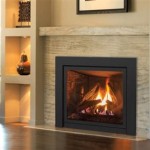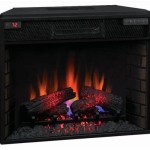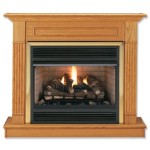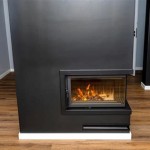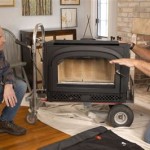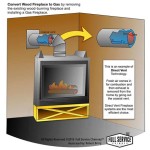```html
Corner Fireplace Design: Maximizing Space and Style
Corner fireplaces represent a strategic design solution for homeowners seeking to integrate a focal point into their living spaces without sacrificing valuable wall area. They are particularly well-suited for smaller rooms, oddly shaped layouts, or areas where a traditional center-wall fireplace is impractical. The placement of a fireplace in a corner opens up new possibilities for furniture arrangement and overall room flow, allowing for a more efficient and aesthetically pleasing use of space. This article will explore the various considerations involved in corner fireplace design, encompassing architectural styles, material choices, safety requirements, and space optimization strategies.
From a historical perspective, fireplaces have long served as both practical heating sources and symbolic hearts of the home. Traditional fireplace designs often dictated the layout of a room, with furniture arranged around the central hearth. However, modern living spaces demand greater flexibility and adaptability. Corner fireplaces offer a contemporary approach to this classic feature, allowing for a seamless integration of the fireplace into a wider range of architectural styles and interior design schemes. By understanding the fundamental principles of corner fireplace design, homeowners can create a warm and inviting atmosphere that complements their personal style and maximizes the functionality of their living space.
Architectural Styles and Corner Fireplace Integration
The architectural style of a home significantly influences the design and aesthetic of a corner fireplace. Matching the fireplace design to the existing architectural features ensures a cohesive and harmonious look. In traditional homes, corner fireplaces often incorporate classic elements such as brick, natural stone, and ornate mantels. These fireplaces may feature detailed carvings, arched openings, and decorative trim to complement the overall character of the house. For instance, a Victorian-style home might benefit from a corner fireplace with a marble surround and a heavily detailed wooden mantel.
Conversely, modern and contemporary homes tend to favor minimalist designs with clean lines and a focus on functionality. Corner fireplaces in these spaces often feature sleek materials such as concrete, glass, and stainless steel. The emphasis is on simplicity and understated elegance, with the fireplace serving as a subtle yet sophisticated focal point. A corner fireplace in a mid-century modern home might feature a simple brick surround with a floating hearth and a minimal mantel.
Transitional designs blend elements of both traditional and modern styles. Corner fireplaces in transitional homes often combine classic materials with contemporary forms. For example, a fireplace might feature a stone surround with a simple, unadorned wooden mantel. The key is to strike a balance between traditional warmth and modern sophistication.
Furthermore, the size and scale of the fireplace should be proportionate to the size of the room. A large, imposing fireplace can overwhelm a small space, while a small fireplace may feel insignificant in a large room. Careful consideration should be given to the overall dimensions of the fireplace and its relationship to the surrounding architectural elements.
Material Selection and Design Considerations
The choice of materials plays a crucial role in determining the overall aesthetic and performance of a corner fireplace. Each material offers its own unique characteristics in terms of appearance, durability, and thermal properties. Brick is a classic choice for fireplace surrounds, offering a timeless appeal and excellent heat retention. Natural stone, such as granite, limestone, and slate, provides a more rustic and organic look. These materials are also highly durable and resistant to heat damage.
For a more modern aesthetic, concrete is a popular choice. Concrete fireplaces can be custom-cast to create unique shapes and textures. They also offer excellent thermal mass, helping to regulate the temperature of the room. Glass is often used as an accent material, particularly in modern fireplaces. Glass doors can enhance the visual appeal of the fireplace and improve its energy efficiency.
The fireplace mantel serves as a decorative focal point and provides a surface for displaying artwork, photographs, and other personal items. Wooden mantels are a classic choice, offering warmth and character. Metal mantels, such as steel or wrought iron, can add a touch of industrial chic. Stone mantels provide a more rustic and natural look. The style and material of the mantel should complement the overall design of the fireplace and the surrounding room.
Beyond the surround and mantel, the firebox itself must be carefully considered. Options range from traditional wood-burning setups to gas inserts and electric models. Each option comes with its own set of advantages and disadvantages relating to fuel efficiency, maintenance, and environmental impact. Gas inserts offer convenience and ease of use, while electric fireplaces provide a cost-effective and environmentally friendly alternative. Wood-burning fireplaces offer the classic ambiance of a natural fire, but require more maintenance and pose a greater risk of air pollution.
Safety Requirements and Space Optimization
Safety is paramount when designing and installing a corner fireplace. Adherence to building codes and safety regulations is essential to prevent fire hazards and ensure the well-being of occupants. Proper ventilation is crucial for wood-burning fireplaces to prevent the buildup of carbon monoxide. Gas fireplaces must be installed by qualified professionals to ensure proper gas line connections and prevent leaks. Electric fireplaces should be installed according to manufacturer’s instructions and should be connected to a properly grounded electrical outlet.
Clearance requirements must be observed to prevent combustible materials from coming into contact with the hot surfaces of the fireplace. The area around the fireplace should be kept clear of flammable materials, such as curtains, rugs, and furniture. Fire extinguishers should be readily available in case of emergency. Regular inspection and maintenance of the fireplace are essential to ensure its safe and efficient operation.
Corner fireplaces can be strategically positioned to optimize the use of space in a room. Placing a fireplace in a corner allows for more flexible furniture arrangement and opens up valuable wall space. The corner fireplace can serve as a natural focal point, drawing the eye and creating a sense of visual balance. Furniture can be arranged around the fireplace to create a cozy and inviting seating area.
Built-in shelving and storage cabinets can be incorporated into the design of the corner fireplace to maximize functionality and organization. Shelves can be used to display books, artwork, and decorative items. Cabinets can provide storage for firewood, blankets, and other household items. The addition of built-in storage helps to declutter the space and create a more organized and efficient living environment.
The space above the fireplace can be utilized to create a striking visual impact. A large piece of artwork, such as a painting or sculpture, can be hung above the fireplace to draw the eye upwards and create a sense of drama. A decorative mirror can be used to reflect light and make the room feel larger. Another option is to install a television above the fireplace, creating a convenient and comfortable entertainment area. However, care must be taken to ensure that the television is properly mounted and that it is not exposed to excessive heat from the fireplace.
Lighting plays a crucial role in creating the desired ambiance in a room with a corner fireplace. Recessed lighting can be used to highlight the fireplace and create a warm and inviting glow. Accent lighting, such as sconces or spotlights, can be used to illuminate artwork or decorative elements. Dimmable lighting allows for greater control over the brightness of the room and can be adjusted to create the desired mood. The combination of natural light and artificial lighting can be used to create a balanced and harmonious lighting scheme that complements the overall design of the room.
```
How To Design Around A Corner Fireplace

Discover The 61 Best Corner Fireplace Designs In 2024 Design Home

Angie S Corner Fireplace Design With Stacked Stone Genstone

Fireplace Stunning Corner Living Design Ideas Your Room For44 Idea Comfy Decor

Arranging Furniture With A Corner Fireplace Brooklyn Berry Designs

59 Elegant Corner Fireplace Ideas Designs For Your Home 2024 Living Room With Decor

12 Corner Fireplace Ideas Cozy Looks To Warm Up The Living Room Real Homes

12 Corner Fireplace Ideas Cozy Looks To Warm Up The Living Room Real Homes

Fireplace Design Ideas For Your Home Designcafe

22 Ultra Modern Corner Fireplace Design Ideas Gas Decor Contemporary
Related Posts

